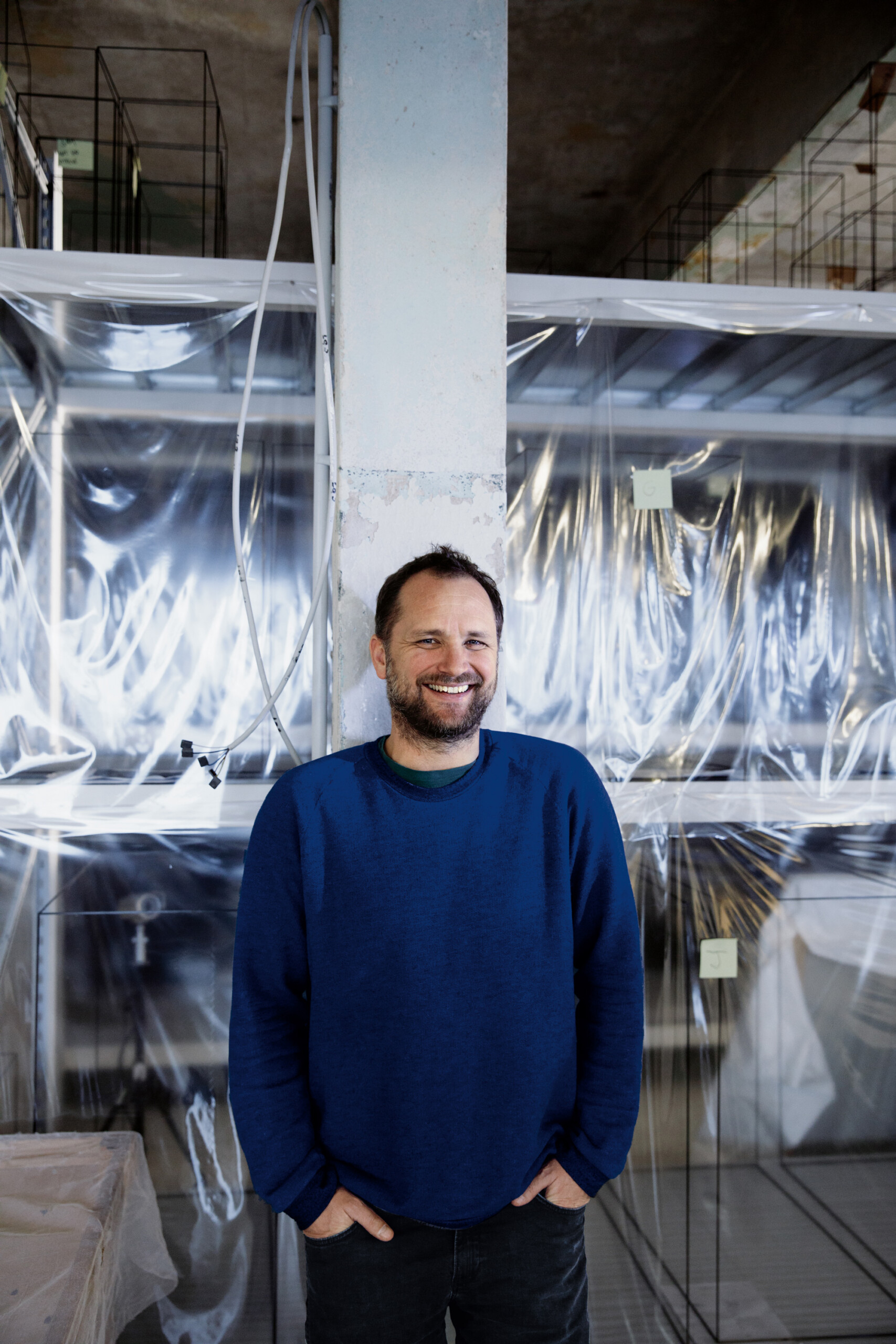When something is talked about, does it become true?
Tomás Saraceno
nomad met the brilliant virtuoso artist, Tomás Saraceno, in his Berlin studio, where he experiments with spiders, contemplates the human condition and develops poetic utopias.
Saraceno delved into old and new solar energy; cosmic jam sessions; the Anthropocene era; how spiders sought him out and not he them; the wind; the sun; and the question of whether humanity is at a crossroads.

Artist Tomás Saraceno considers the human condition, and human potential in the broader universe, not by looking in the mirror, but through speculation and spider webs. What if we could live in cloud cities? Or communicate with other species? Or consider a new epoch beyond the current discussion around the Anthropocene era, a proposed geological age in which man’s traces are discernible everywhere on Earth? Saraceno’s new bodies of work, often created in collaboration with scientists and institutions like the Max Planck Institute and MIT, swirl around these and other poetically utopian aspirations based on his obsessions with philosophy, astrophysics, and arachnology.
INTERVIEW
nomad met the Argentinian artist in his Berlin studio — a multistory factory building in the city’s deep east, buzzing with research, experiments and spider webs. But before settling into a breakfast interview in his office, Saraceno gave a tour of the studio’s Arachno-Research zone, where artistic collaborations with spiders or the behaviour of the dust in the air are taking place, on view in an area surrounded by blackout curtains.
We enter a dark room in which spider webs spun in open metal structures glimmer as light shines upon them. In one, a large spider is at work. A beam of light shining on her web shows the dust in the air. Its particles are tracked on a computer screen and its sound and movement is audible through speakers. It’s evidence of Saraceno’s research-based art, which explores notions of sustainability and interspecies communication, among other subjects, in wildly innovative ways.
Tomás
Look (pointing to the large spider with red stripes on her legs) … there she is.
Kimberly
Oooh, beautiful (hesitates, because the spider is very large).
Tomás
Are you okay? Some people have arachnophobia. I should have asked.
Kimberly
Well, if I saw this spider at home, I’d be terrified; but here, I’m fine.
Tomás
Usually they live in the corners of houses. They’re always with us. But nature is getting more problematic for them, isn’t it? Where does nature start and end for the spider web? What kind of genocide do we produce for other animals when we simply broom them away? Am I living in their house, or are they living in my house? What’s the relationship?
Basically the spider web is a body cognition, an extended brain, somehow. Some spiders don’t have eyes. And the male will never spin the web; the female spins the web. It should be Spiderwoman instead of Spiderman!
Kimberly
What’s this? (looking at the swirling dust)
Tomás
It’s a jam session. We’re trying to bring the spider into dialogue with the dust. Within this dust are other life forms, like dust mites. They are the same family as the arachnids and they float in the air because of thermals. We use the camera to track the movement of the dust. It’s what you see here on the computer screen — lines and patterns that are almost topographical. Like galaxies or particles, or exoplanets.
(The sound stops as we stop moving)
And we sonify the dust. If I say Tomaso or a name of the spider, you see how the dust moves. You start to hear things differently.
Kimberly
I had no idea there was this much life in the air.
Tomás
There are 40,000 tons of cosmic dust — not terrestrial dust — that hit the planet every year from space. One particle of cosmic dust touches every human every day.
Please select an offer and read the Complete Article Issue No 5 Subscriptions
Already Customer? Please login.
